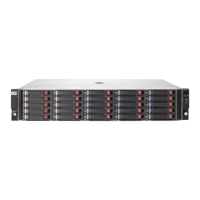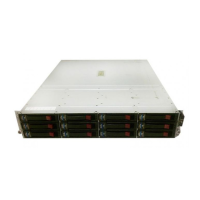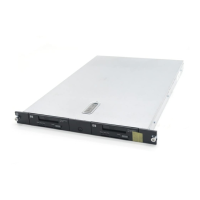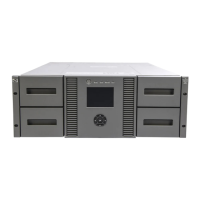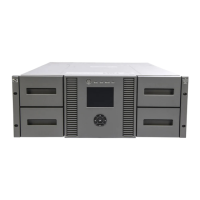• Scalability rules, page 382
For the latest B-series iSCSI Director Blade information, see the Application Note for the HP
StorageWorks B-series iSCSI Director Blade at http://www.hp.com/go/sandesignguide.
For the latest B-series documentation, see http://h18006.www1.hp.com/storage/saninfrastructure.html.
Blade overview
The B-series iSCSI Director Blade provides IP hosts access to Fibre Channel storage devices. The IP
host sends SCSI commands encapsulated in iSCSI PDUs to a blade port over TCP/IP. The PDUs are
routed from the IP network to the Fibre Channel network and then forwarded to the target.
Figure 142 shows a sample configuration in which a B-series iSCSI Director Blade bridges an IP
network and Fibre Channel network.
25320b
Host 1
Host 2
IP
network
B-series
iSCSI
Director
Blade
Fibre
Channel
IP link ISL
B-series
fabric
Fibre
Channel
Fibre
Channel
Figure 142 Fibre Channel and IP configuration with the B-series iSCSI Director Blade
.
The incoming iSCSI initiators on an iSCSI port are mapped as a single iSCSI virtual initiator. The
virtual initiator is presented to Fibre Channel targets as an N_Port Fibre Channel initiator device with
a WWN.
By default, the blade uses basic LUN mapping to map Fibre Channel targets to iSCSI virtual targets.
This creates one iSCSI virtual target per Fibre Channel target and allows 1-to-1 mapping. The iSCSI
initiators are then allowed to access the iSCSI virtual targets.
Hardware support
This section describes the devices compatible with the B-series iSCSI Director Blade.
iSCSI storage380

